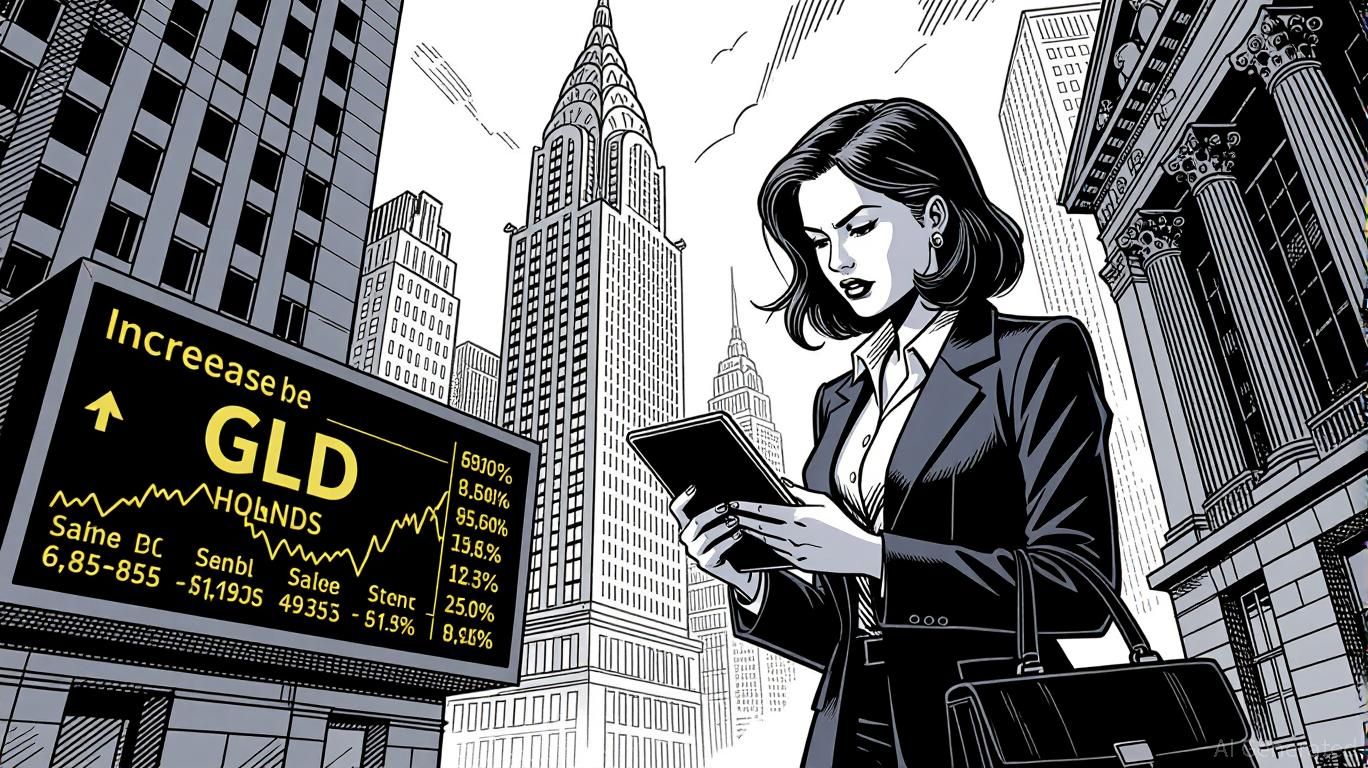GLD Price: Geopolitical Uncertainty and the Return of Gold as a Safe-Haven Investment
- The Russia-Ukraine war has driven a 38% surge in gold prices, with GLD ETF seeing 397 tonnes of inflows in 2025 as geopolitical risks reshape investment strategies. - Central banks added 244 tonnes of gold in Q1 2025, while dollar weakness and inflationary pressures boosted GLD's appeal as a hedge against systemic risks. - Institutional investors use GLD to hedge geopolitical risks, while retail demand in China and India reached 124 and 47 tonnes, respectively, highlighting gold's dual role as an inflati

The ongoing conflict between Russia and Ukraine has significantly influenced global financial markets, prompting shifts in investor preferences and asset distribution. As the war moves into its fourth year, gold—traditionally viewed as a safeguard in times of turmoil—has experienced a notable increase in popularity. Central to this movement is the SPDR Gold Shares (GLD) ETF, now serving as a primary vehicle for both institutional and individual investors seeking exposure to physical gold. This article explores the ways in which escalating geopolitical tensions are channeling safe-haven investments into
Geopolitical Uncertainty and the Gold Rally
The conflict has introduced a sustained risk premium into the world’s markets, with gold prices reaching their highest levels in years. By early 2025, the average gold price set by the London Bullion Market Association (LBMA) was $2,860 per ounce, marking a 38% increase compared to the previous year. The surge is not solely a reaction to the conflict but also reflects broader concerns: unpredictable U.S. trade policies, a weakening dollar, and persistent inflation. Gold’s reputation as a reliable store of value has been reinforced by central banks, which collectively acquired 244 tonnes of gold in the first quarter of 2025. Nations such as China, India, and Turkey are actively reducing their reliance on dollar-based reserves, a move that has indirectly increased the attractiveness of GLD.
GLD as a Proxy for Physical Gold Demand
GLD, the world’s leading gold ETF by assets, has closely tracked the growth in demand for physical gold. In the first half of 2025, GLD saw inflows totaling 397 tonnes, bringing its total holdings to 3,616 tonnes—the highest since 2022. This expansion reflects two key trends: institutions are utilizing GLD to shield portfolios from geopolitical instability, while individual investors are turning to gold for its liquidity and ease of access compared to owning bullion directly.
Institutional interest has been fueled by central bank purchasing and supportive economic factors. The U.S. dollar’s decline—its poorest first-half performance since 1973—has made gold more affordable for overseas investors, particularly those in emerging economies, thereby increasing GLD’s allure. At the same time, retail buyers in China and India have increased their purchases of gold bars and coins, with demand in the first quarter of 2025 reaching 124 tonnes and 47 tonnes, respectively. Together, these patterns highlight gold’s dual function as both a shield against geopolitical risk and a buffer against inflation.
Macroeconomic Tailwinds and Policy Uncertainty
In addition to the war, several other factors are boosting gold’s appeal. The Federal Reserve’s recent dovish stance—with an 83% chance of a 25-basis-point rate cut expected in September 2025—has reduced the downside of holding assets that do not yield interest, such as gold. Furthermore, the U.S. government’s fiscal issues—including a national debt of $34 trillion and increasing interest payments—have cast doubt on the dollar’s long-term reliability. GLD’s 2025 performance, up 40% so far this year, mirrors these underlying trends.
Individual investors are also responding to regional pressures. In Europe, growing fears of stagflation and potential new U.S. tariffs have spurred greater investment in gold ETFs. Switzerland, for example, saw a surge in GLD demand after imposing a 39% export tariff on bullion. In the United States, concerns about possible policy changes—such as the controversial dismissal of the BLS commissioner—have raised worries over the integrity of economic reporting and politicization, further strengthening gold’s role as a safe asset.
Investment Implications and Strategic Considerations
For those investing, GLD stands out by offering liquidity, openness, and portfolio diversification. However, it is not without its hazards. The ETF’s value moves in tandem with gold’s market price, which can fluctuate sharply depending on changes in global politics and monetary policy. For instance, a possible resolution to the Ukraine conflict might reduce the risk premium currently factored into gold prices, potentially causing short-term declines.
A measured investment strategy is critical. Employing dollar-cost averaging in GLD during periods of high market volatility can help reduce exposure to sudden swings. Investors are also advised to balance GLD holdings with other low-risk assets, such as government bonds or defensive stocks, as part of a broader risk management approach.
Conclusion
The war between Russia and Ukraine has strengthened gold’s position as a fundamental asset in global investment portfolios. GLD, providing straightforward and flexible access to gold, has become a vital instrument for both professional and everyday investors seeking stability in uncertain geopolitical and economic times. Although the future remains uncertain, persistent drivers such as central bank diversification, a weakening dollar, and inflation suggest that GLD will likely continue to play an important role in diversified investment strategies. Ultimately, for today’s investors, gold has evolved from a mere hedge to an essential component in navigating systemic risks.
Disclaimer: The content of this article solely reflects the author's opinion and does not represent the platform in any capacity. This article is not intended to serve as a reference for making investment decisions.
You may also like
Announcement on Bitget listing NFLXUSDT, FUTUUSDT, JDUSDT, RDDTUSDT, QQQUSDT STOCK Index perpetual futures
Bitget Trading Club Championship (Phase 15)—Trade spot and futures to share 120,000 BGB, up to 2200 BGB per user!
CandyBomb x COMMON: Trade futures to share 1,111,111 COMMON!